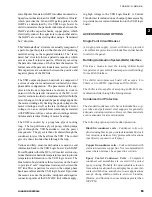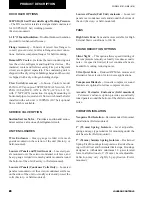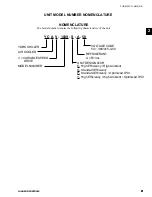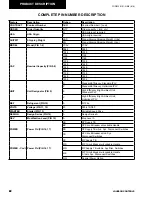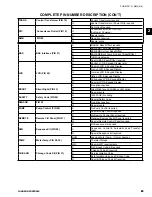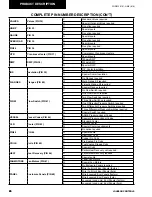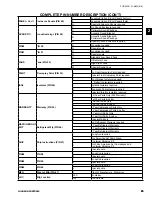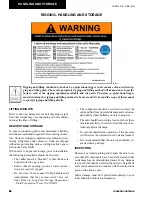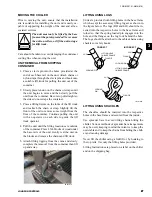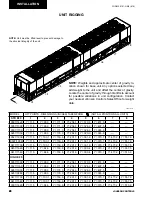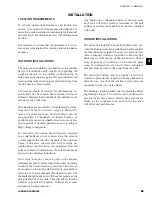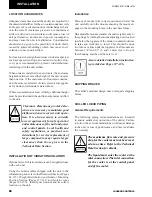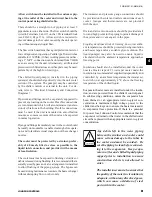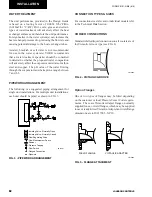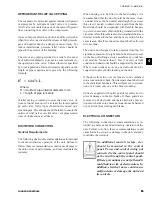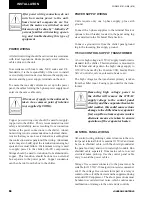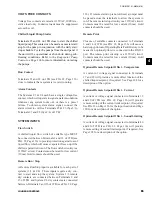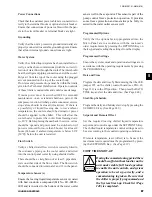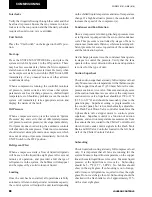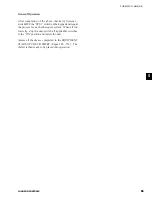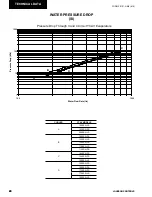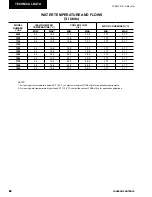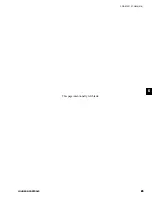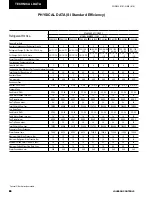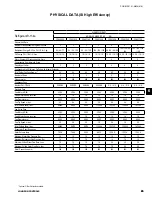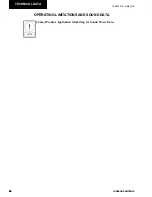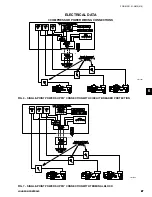
33
JOHNSON CONTROLS
FORM 201.21-NM4 (616)
33
JOHNSON CONTROLS
4
REFRIGERANT RELIEF VALVE PIPING
The evaporator is protected against internal refrigerant
overpressure by refrigerant relief valves. A pressure
relief valve is mounted on each of the main refrigerant
lines connecting the cooler to the compressors.
A piece of pipe is fitted to each valve and directed so that
when the valve is activated the release of high pressure
gas and liquid cannot be a danger or cause injury. For
indoor installations, pressure relief valves should be
piped to the exterior of the building.
The size of any piping attached to a relief valve must
be of sufficient diameter so as not to cause resistance to
the operation of the valve. Unless otherwise specified
by local regulations. Internal diameter depends on the
length of pipe required and is given by the following
formula:
D
5
= 1.447 x L
Where:
D = minimum pipe internal diameter in cm
L = length of pipe in meters
If relief piping is common to more than one valve, its
cross-sectional area must be at least the total required
by each valve. Valve types should not be mixed on a
common pipe. Precautions should be taken to ensure the
outlets of relief valves or relief valve vent pipes remain
clear of obstructions at all times.
DUCTWORK CONNECTION
General Requirements
The following ductwork recommendations are intended
to ensure satisfactory operation of the unit. Failure to
follow these recommendations could cause damage to
the unit, or loss of performance, and may invalidate the
warranty.
When ducting is to be fitted to the fan discharge it is
recommended that the duct should be the same cross-
sectional area as the fan outlet and straight for at least
three feet (1 meter) to obtain static regain from the fan.
Ductwork should be suspended with flexible hangers
to prevent noise and vibration being transmitted to the
structure. A flexible joint is also recommended between
the duct attached to the fan and the next section for the
same reason. Flexible connectors should not be allowed
to concertina.
The unit is not designed to take structural loading. No
significant amount of weight should be allowed to rest
on the fan outlet flange, deck assemblies or condenser
coil module. No more than 3 feet (1 meter) of light
construction ductwork should be supported by the unit.
Where cross winds may occur, any ductwork must be
supported to prevent side loading on the unit.
If the ducts from two or more fans are to be combined
into a common duct, back-flow dampers should be fitted
in the individual fan ducts. This will prevent re-circula-
tion of air when only one of the fans is running.
Units are supplied with outlet guards for safety and to
prevent damage to the fan blades. If these guards are
removed to fit ductwork, adequate alternative precau
-
tions must be taken to ensure persons cannot be harmed
or put at risk from rotating fan blades.
ELECTRICAL CONNECTION
The following connection recommendations are in-
tended to ensure safe and satisfactory operation of the
unit. Failure to follow these recommendations could
cause harm to persons, or damage to the unit, and may
invalidate the warranty.
No additional controls (relays, etc.)
should be mounted in the control
panel. Power and control wiring not
connected to the control panel should
not be run through the control panel.
If these precautions are not followed it
could lead to a risk of electrocution. In
addition, electrical noise could cause
malfunctions or damage the unit and
its controls.

